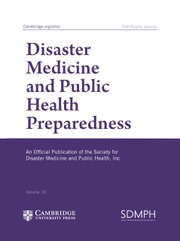No CrossRef data available.
Article contents
Pandemic Triggered Emergency Supply Chain Management Innovations: A Scientometric Analysis Based on Bibliometrics and Dynamic Topic Models
Published online by Cambridge University Press: 11 April 2025
Abstract
The outbreak of major epidemics, such as COVID-19, has had a significant impact on supply chains. This study aimed to explore knowledge innovation in the field of emergency supply chain during pandemics with a systematic quantitative analysis.
Based on the Web of Science (WOS) Core Collection, proposing a 3-stage systematic analysis framework, and utilizing bibliometrics, Dynamic Topic Models (DTM), and regression analysis to comprehensively examine supply chain innovations triggered by pandemics.
A total of 888 literature were obtained from the WOS database. There was a surge in the number of publications in recent years, indicating a new field of research on Pandemic Triggered Emergency Supply Chain (PTESC) is gradually forming. Through a 3-stage analysis, this study identifies the literature knowledge base and distribution of research hotspots in this field and predicts future research hotspots and trends mainly boil down to 3 aspects: pandemic-triggered emergency supply chain innovations in key industries, management, and technologies.
COVID-19 strengthened academic exchange and cooperation and promoted knowledge output in this field. This study provides an in-depth perspective on emergency supply chain research and helps researchers understand the overall landscape of the field, identifying future research directions.
- Type
- Original Research
- Information
- Copyright
- © The Author(s), 2025. Published by Cambridge University Press on behalf of Society for Disaster Medicine and Public Health, Inc


